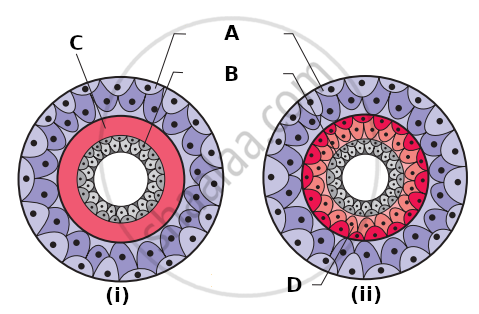Advertisements
Advertisements
प्रश्न
The symmetry exhibited in cnidarians is ______.
विकल्प
Radial
Bilateral
Pentamerous radial
Asymmetrical
उत्तर
The symmetry exhibited in cnidarians is Radial.
संबंधित प्रश्न
Distinguish between intracellular and extracellular digestion.
What are the reasons that you can think of for the arthropods to constitute the largest group of the animal kingdom?
Complete the following chart.
| Body cavity | Germ Layer | Phylum |
| Absent | ______ | Porifera |
| Absent | Triploblastic | ______ |
| Pseudocoelom | ______ | Aschelminthes |
| Present | ______ | Arthropoda |
Which of the following animals has a true coelom?
In Pheretima locomotion occurs with the help of ______.
Which of the following have the highest number of species in nature?
Which of the following is a crustacean?
Lateral line sense organs occur in ______.
Observe the animal below and answer the following questions.

- Identify the animal.
- What type of symmetry does this animal exhibit?
- Is this animal Cephalized?
- How many germ layers does this animal have?
- How many openings does this animal’s digestive system have?
- Does this animal have neurons?
______ was a greek philosopher who classified animals.
In which of the following the notochord is present only in embryonic stages?
Examine the figures of diploblastic (i) and triploblastic (ii) organization in animals given below and identify the labelled parts A to D.

Which group of chordates possess sucking and circular mouth without jaws?
Differentiate between a diploblastic and a triploblastic animal.
Sort out the animals on the basis of their symmetry (radial or bilateral) coelenterates, ctenophores, annelids, arthropods, and echinoderms.
What is the relationship between germinal layers and the formation of body cavity in case of coelomate, acoelomates and pseudocoelomates?
Animal with bilateral symmetry in ______.
